Koyaanisqatsi is a american film of genre Drama directed by Godfrey Reggio released in USA on 27 april 1983 with Edward Asnere
Koyaanisqatsi (1983)

If you like this film, let us know!
- Infos
- Casting
- Technical infos
- Photos
- Videos
- Film quotes
- Characters
- Music
- Awards
Koyaanisqatsi (/koʊjɑːnɪsˈkɑːtsiː/), also known as Koyaanisqatsi: Life Out of Balance, is a 1982 American documentary film directed by Godfrey Reggio with music composed by Philip Glass and cinematography by Ron Fricke.
The film consists primarily of slow motion and time-lapse footage of cities and many natural landscapes across the United States. The visual tone poem contains neither dialogue nor a vocalized narration: its tone is set by the juxtaposition of images and music. Reggio explained the lack of dialogue by stating "it's not for lack of love of the language that these films have no words. It's because, from my point of view, our language is in a state of vast humiliation. It no longer describes the world in which we live." In the Hopi language, the word Koyaanisqatsi means "unbalanced life". The film is the first in the Qatsi trilogy of films: it is followed by Powaqqatsi (1988) and Naqoyqatsi (2002). The trilogy depicts different aspects of the relationship between humans, nature, and technology. Koyaanisqatsi is the best known of the trilogy and is considered a cult film. However, because of copyright issues, the film was out of print for most of the 1990s.
Synopsis
The first image in the film is of the Great Gallery pictograph in Horseshoe Canyon (Utah), in Canyonlands National Park. The section shown depicts several tall, shadowed figures standing near a taller figure adorned with a crown. The next image is a close-up of a Saturn V rocket during its launch. The film fades into a shot of a desolate desert landscape. From there, it progresses to footage of various natural phenomena such as waves and clouds.Actors

Edward Asnere
(Self - On TV (archive footage) (uncredited))
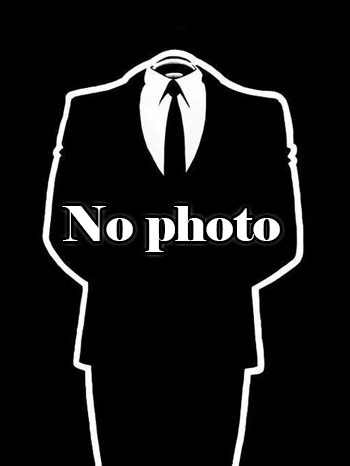
Dick Cavett
(Self - On TV (archive footage) (uncredited))
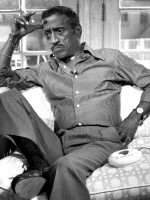
Sammy Davis Jr.
(Self - On TV (archive footage) (uncredited))

Mark Goodman
(Self - On TV (archive footage) (uncredited))

Peter Sellers
(Self - On TV (archive footage) (uncredited))
Qatsi trilogy
Comments
Leave comment :
Suggestions of similar film to Koyaanisqatsi
There are 86 films with the same actors, 4 films with the same director, 72842 with the same cinematographic genres (including 73 with exactly the same 3 genres than Koyaanisqatsi), 1027 films with the same themes (including 138 films with the same 2 themes than Koyaanisqatsi), to have finally 70 suggestions of similar films.If you liked Koyaanisqatsi, you will probably like those similar films :
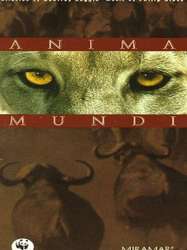
Anima Mundi (1993)
, 28minutesDirected by Godfrey Reggio
Origin Italie
Genres Documentary, Musical
Themes Environmental films, Documentary films about environmental issues, Documentary films about nature
Rating74%





"Anima Mundi" est une combinaison poétique de musique et d'images réalisées à partir des meilleurs films scientifiques, entremêlées d'images originales et accompagnées d'une bande sonore continue composée par Philip Glass.

Visitors (2013)
, 1h27Directed by Godfrey Reggio
Origin USA
Genres Documentary, Horror
Themes Documentary films about technology
Rating62%





Un documentaire expérimental consacré à la relation entre l'Homme et la technologie.

Genres Documentary
Themes Environmental films, Films about terrorism, Documentary films about environmental issues, Documentary films about technology
Actors Edward Asnere
Rating75%





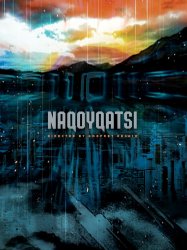
Naqoyqatsi (2002)
, 1h29Directed by Godfrey Reggio
Origin USA
Genres Drama, Thriller, Documentary, Musical
Actors Marlon Brando, Elton John, Julia Louis-Dreyfus, Steven Soderbergh, Madonna, Ronald Reagan
Rating63%





According to Reggio, the film has no screenplay per se, but three movements (like those of a symphony) with different themes:

Powaqqatsi (1988)
, 1h39Directed by Godfrey Reggio
Origin USA
Genres Drama, Documentary, Musical
Actors Godfrey Reggio, Christie Brinkley, Philip Glass, Cheryl Tiegs
Rating71%





In the beginning chapter, "Serra Pelada", men from Serra Pelada (a gold mine in Brazil) are seen carrying bags of dirt up to a destination. In the middle of the chapter, various shots outside of Serra Pelada are shown. Near the end of the chapter, a few men are carrying another man who was struck by a falling rock (mentioned in the "Impact of progress" feature on the DVD) uphill along a procession of workers who are carrying dirt filled sacks. After that, several discordant layered exposures of the dirt carriers are shown. The scene cross fades to show the image of a head, with multiple exposures of the same head rapidly rotating and layered upon to give a manifold appearance. This is an apparent allusion to Janus, the god of beginnings, endings and transitions, keeping with the film's central themes of progress and change. After that, the film's title is shown in red.
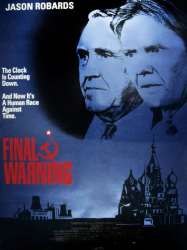
Chernobyl: The Final Warning (1991)
, 1h35Directed by Anthony Page
Origin USA
Genres Drama, Documentary, Historical
Themes Environmental films, Documentary films about environmental issues, Documentary films about historical events, Documentary films about nuclear technology, Documentary films about technology
Actors Jon Voight, Jason Robards, Sammi Davis, Annette Crosbie, Ian McDiarmid, Vincent Riotta
Rating61%





Based on a true account of events, the plot interweaves the stories of a fireman at the nuclear power plant, his pregnant wife, the government officials whose policies helped and hindered rescue efforts and America's Dr. Robert Gale (Jon Voight), who led the international medical team that helped treat survivors of the disaster. Robert Gale published the original account of his experiences under the same title in 1988 with Thomas Hauser; it was adapted by Ernest Kinoy for the screenplay.

Fuel (2008)
, 1h52Directed by Josh Tickell
Origin USA
Genres Drama, Documentary
Themes Environmental films, Documentary films about environmental issues, Documentary films about technology
Actors Josh Tickell, Larry Hagman, Sheryl Crow, Woody Harrelson, Neil Young, Larry David
Rating72%






Hiroshima (2005)
, 1h29Origin United-kingdom
Genres Drama, Documentary
Themes Environmental films, Seafaring films, Transport films, Aviation films, Documentary films about environmental issues, Documentary films about war, Documentary films about historical events, Documentary films about nuclear technology, Documentary films about technology, Political films, Documentary films about World War II
Actors John Hurt, Ed Bishop, Katsumi Chō, Naoko Mori, Ian Shaw, Shane Rimmer
Rating76%





À 8h15 précises ce 6 août 1945, le monde a changé. 40.000 personnes trouvent instantanément la mort, mais ce sont bien 200.000 décès qui seront provoqués par l´explosion de la première bombe nucléaire sur Hiroshima, au Japon. Ce documentaire exceptionnel de 90 minutes n´est pas « Un énième film anti-guerre » déclare son réalisateur Paul Wilmshurst, « mais bien l´analyse neutre et objective d´une décision cruciale. Il ne s´agit pas d´être pro-américain ou pro-japonais, j´ai simplement voulu raconter la vérité. » Une vérité technologique, scientifique, militaire et politique qui se dessine dans les trois semaines précédant l´attaque, alors que le premier essai nucléaire vient de se dérouler dans le désert du Nouveau-Mexique, aux États-Unis. Le spectateur se retrouve alors dans la pièce où est prise la décision ultime, à bord de l´Enola Gay pendant son trajet fatidique, à l´intérieur de la bombe au moment de l´explosion, puis dans les rues dévastées d´Hiroshima.

Hiroshima (1995)
, 3h10Directed by Roger Spottiswoode, Koreyoshi Kurahara, Hideo Sekigawa
Origin Canada
Genres Drama, Documentary
Themes Environmental films, Seafaring films, Transport films, Aviation films, Documentary films about environmental issues, Documentary films about war, Documentary films about historical events, Documentary films about nuclear technology, Documentary films about technology, Political films, Documentary films about World War II
Actors Eiji Okada, Kenneth Welsh, Ken Jenkins, Yumeji Tsukioka, Tatsuo Matsumura, Wesley Addy
Rating77%





The film opens in April 1945 with the death of Franklin Roosevelt and the succession of Harry Truman to the presidency. In Europe, the Germans are close to surrender, but in the Pacific the bloody battle for Okinawa is still underway and an invasion of the Japanese home islands is not foreseen until the autumn. American battle casualties have almost reached 900,000, with Japanese casualties at 1.1 million, and some 8 million Asian civilians have died in the war that began with Japan's invasion of Manchuria in 1931.
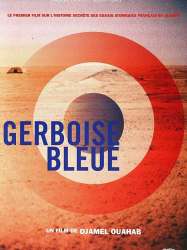
Gerboise bleue (2009)
, 1h30Origin Algerie
Genres Drama, Documentary
Themes Environmental films, Documentary films about environmental issues, Documentary films about war, Documentary films about historical events, Documentary films about nuclear technology, Documentary films about technology
Between 1960 and 1966, France carried out four atmospheric nuclear tests and another thirteen underground ones to the south of Reggane (Algerian Sahara). The first was called Blue Jerboa and was four times as powerful as the bomb dropped on Hiroshima. For the first time, French and Tuareg survivors speak of their fight to have their illnesses recognized as such, and reveal in what the conditions the tests were carried out. Fifty years later, the French Army still refuses to acknowledge its responsibility towards the populations exposed to the radiation.
 Connection
Connection
